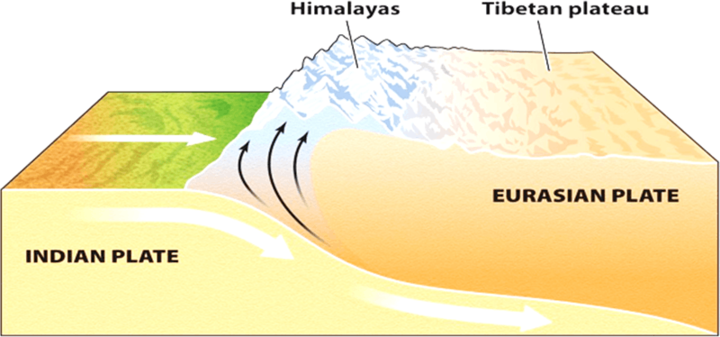Describe How the Himalayas Were Formed?
By BYJU'S Exam Prep
Updated on: November 9th, 2023
The Himalayas were formed as a result of the collision between the Indian Plate and Eurasian Plate which began 50 million years ago and continues today. About 225 million years ago, India was a large island still situated off the Australian coast, and a vast ocean (called the Tethys Sea) separated India from the Asian continent. When Pangaea broke apart about 200 million years ago, India began to forge northward. Scientists, by studying the history of the Tethys Sea have reconstructed India’s northward journey.
Table of content
Formation of Himalayas
The rock density of the Indian plate and the Eurasian plate is almost the same. Thus, one plate could not be placed under the other, and therefore could only be released by pushing the plates upwards and forming the Himalayan peaks. The Himalayan mountains have emerged from a great geo alignment called the Tethys Sea and the uplift has occurred in different phases.
The northern part consisted of present-day North America and Eurasia (Europe and Asia) which is called Laurasia or Angaraland. The southern part of Pangaea consisted of present-day South America, Africa, South India, Australia, and Antarctica. This landmass was called Gondwanaland.

The Himalayan region is an arc-shaped area that is formed of sedimentary rocks. The average height of the peaks here is nearly 6000 meters.
Related Questions:
- The Northernmost Range of Himalayas Is Known As
- Name the Three Parallel Ranges of the Himalayas
- What are the Major Divisions of the Himalayas?
- Which of the following is not a Green house gas?
- How Many Parts are in the Indian Constitution?
- Secondary Distribution is generally carried out at which Voltage level?
